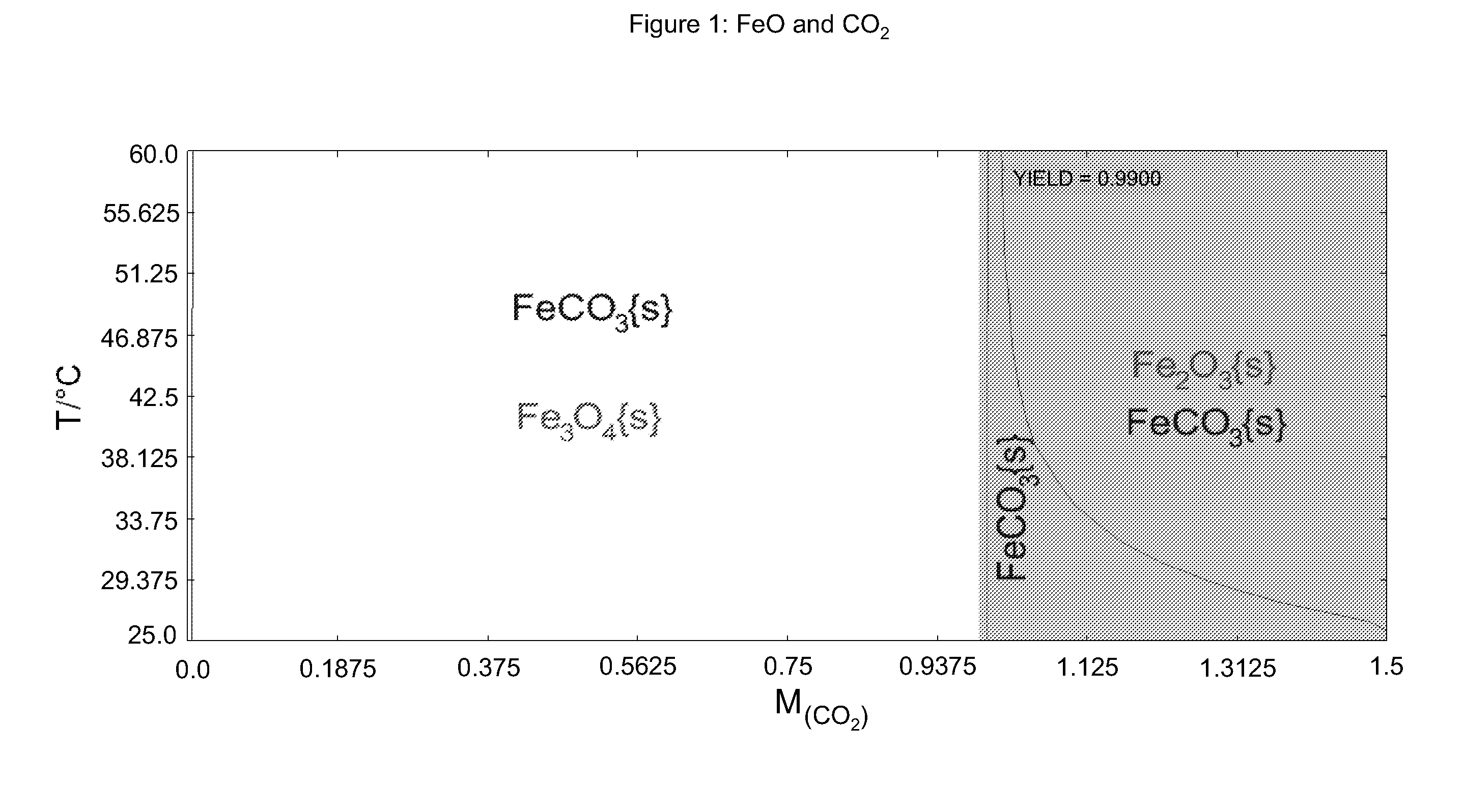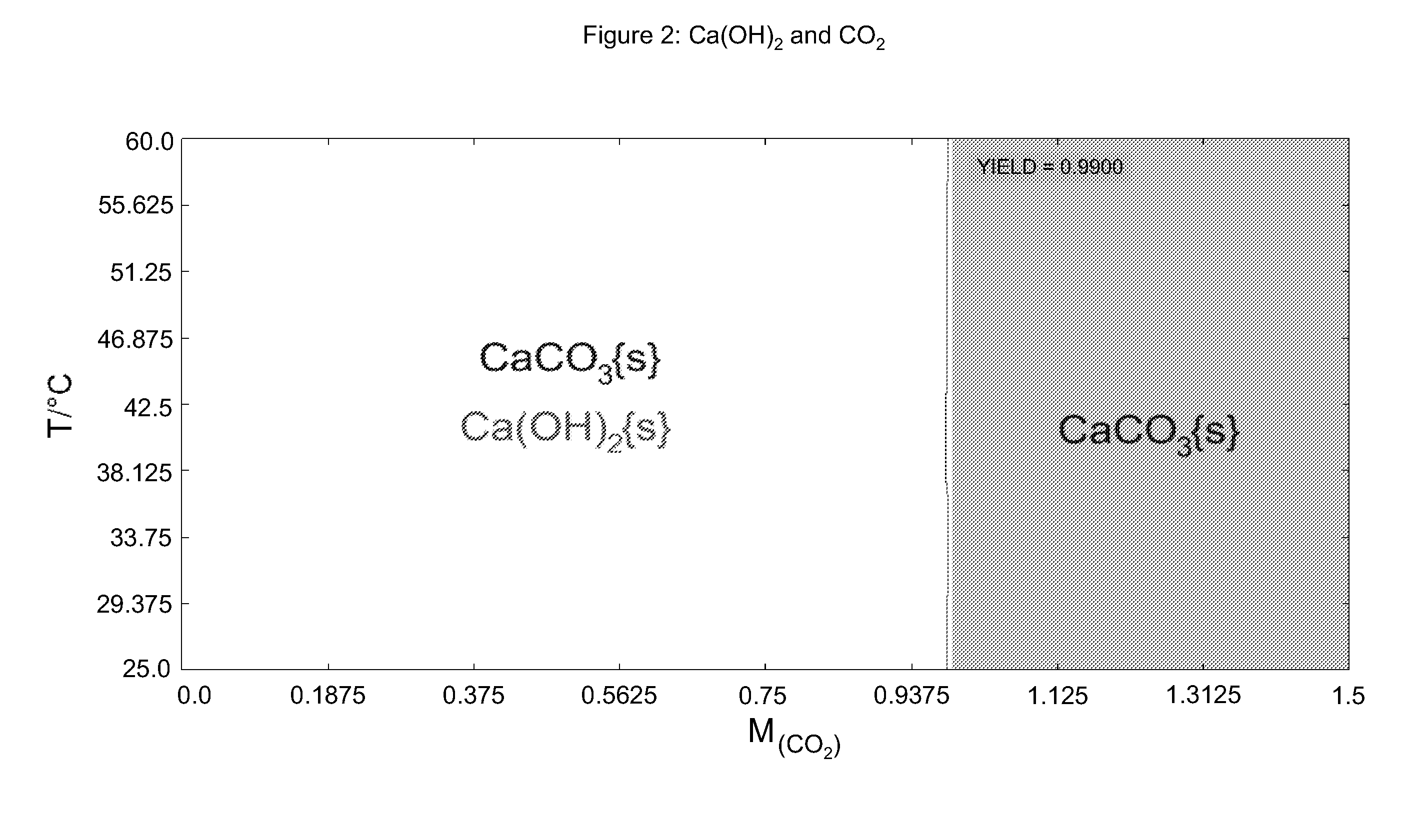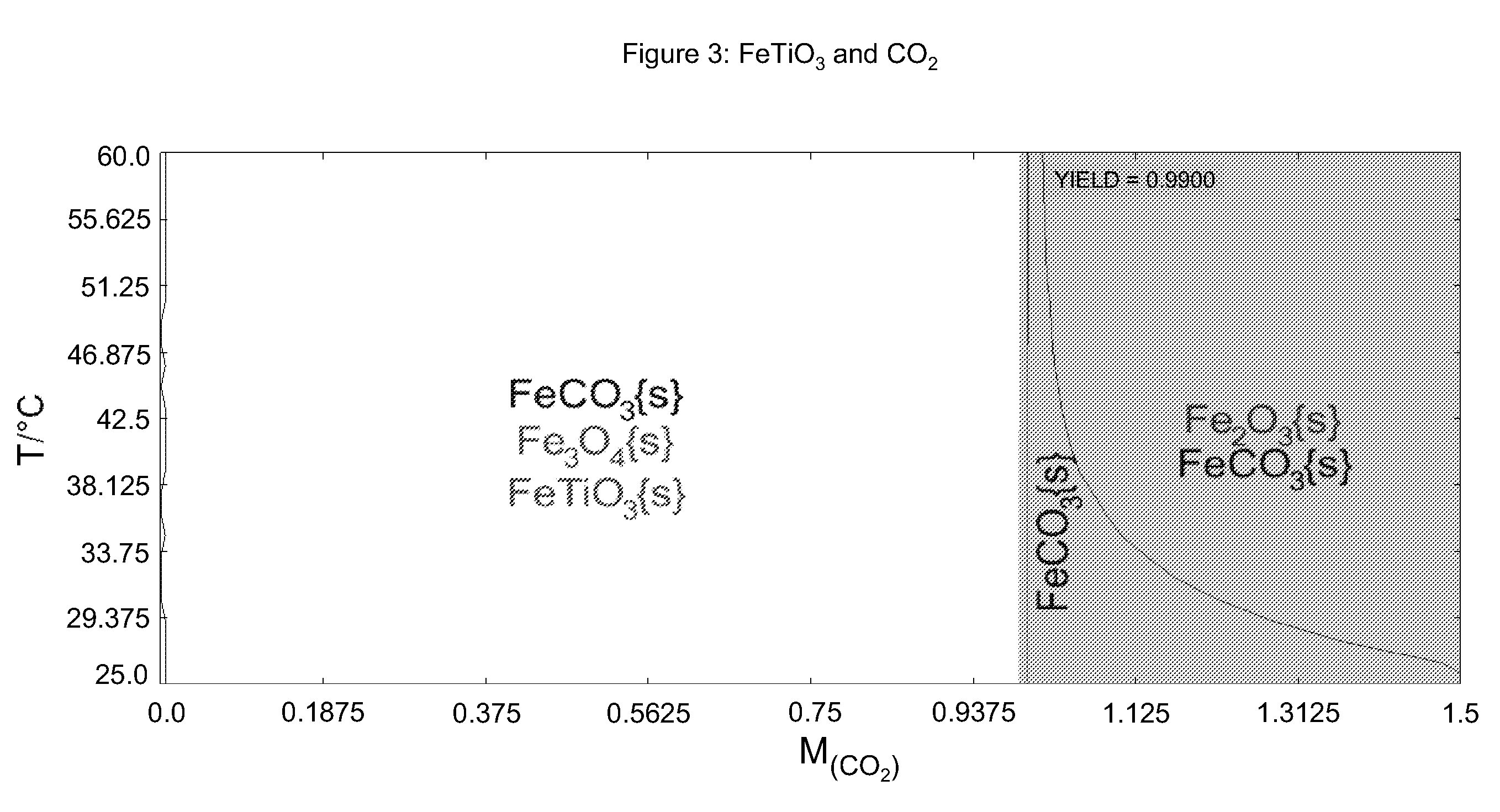Systems and methods for capture and sequestration of gases and compositions derived therefrom
a technology of capture and sequestration system and gas, which is applied in the field of systems and methods for capture and sequestration of gases and compositions derived therefrom, can solve the problems of generating carbon dioxide, among other toxic and/or greenhouse gases, at very significant levels, and sub>2 /sub>(pcc) from flue gas remains a challeng
- Summary
- Abstract
- Description
- Claims
- Application Information
AI Technical Summary
Benefits of technology
Problems solved by technology
Method used
Image
Examples
working examples
Non-Limiting Working Examples
Example 1
Calcium Carbonate from Calcium Hydroxide and Potassium Carbonate
[0105]Calcium oxide powder, ˜5 g, was reacted with ˜100 ml de-ionized water to form Ca(OH)2 in Teflon jar at room temperature. The calcium hydroxide and water mixture was cooled down to room temperature. It was then shaken and poured into colloidal press until the reservoir was filled roughly around 75%. A load of 7000 pounds was applied on the colloidal press slowly. A Teflon™ jar was filled with 200 ml of de-ionized water and 30 g of K2CO3 was dissolved in it. Wet Ca(OH)2 pellet was placed on a Teflon tray and placed in the Teflon jar. The cap of the jar was closed and kept at room temperature for 4 days. The pellet was then taken out and rinsed with de-ionized water. The reaction product was subjected to x-ray diffraction and was found to comprise mainly CaCO3 with a small amount of Ca(OH)2. The sample maintained its shape and had sufficient mechanical strength to resist fracture...
example 2
Calcium Oxalate Monohydrate from Calcium Hydroxide and Oxalic Acid
[0106]Calcium oxide powder, ˜5 g, was reacted with ˜100 ml de-ionized water to form Ca(OH)2 in a Teflon™ jar at room temperature. The calcium hydroxide and water mixture was cooled down to room temperature. It was then shaken and poured into a 1″ diameter colloidal (filter) press until the reservoir was filled roughly around 75%. A load of 7000 pounds was applied on the colloidal press slowly. The Teflon jar was filled with 200 ml of de-ionized water and 30 g of H2C2O4 were mixed. The wet Ca(OH)2 pellet was placed on a Teflon™ tray and placed in the Teflon™ jar. The cap of the jar was closed and kept at room temperature for 4 days. The pellet was then taken out and rinsed with de-ionized water. X-ray diffraction revealed the presence of both CaC2O4.H2O and Ca(OH)2. The sample maintained its shape and size as pressed and did not change dimensions after hydrothermal liquid phase sintering The material is mechanically st...
PUM
| Property | Measurement | Unit |
|---|---|---|
| decomposition temperature | aaaaa | aaaaa |
| decomposition temperature | aaaaa | aaaaa |
| temperature | aaaaa | aaaaa |
Abstract
Description
Claims
Application Information
 Login to View More
Login to View More - R&D
- Intellectual Property
- Life Sciences
- Materials
- Tech Scout
- Unparalleled Data Quality
- Higher Quality Content
- 60% Fewer Hallucinations
Browse by: Latest US Patents, China's latest patents, Technical Efficacy Thesaurus, Application Domain, Technology Topic, Popular Technical Reports.
© 2025 PatSnap. All rights reserved.Legal|Privacy policy|Modern Slavery Act Transparency Statement|Sitemap|About US| Contact US: help@patsnap.com



